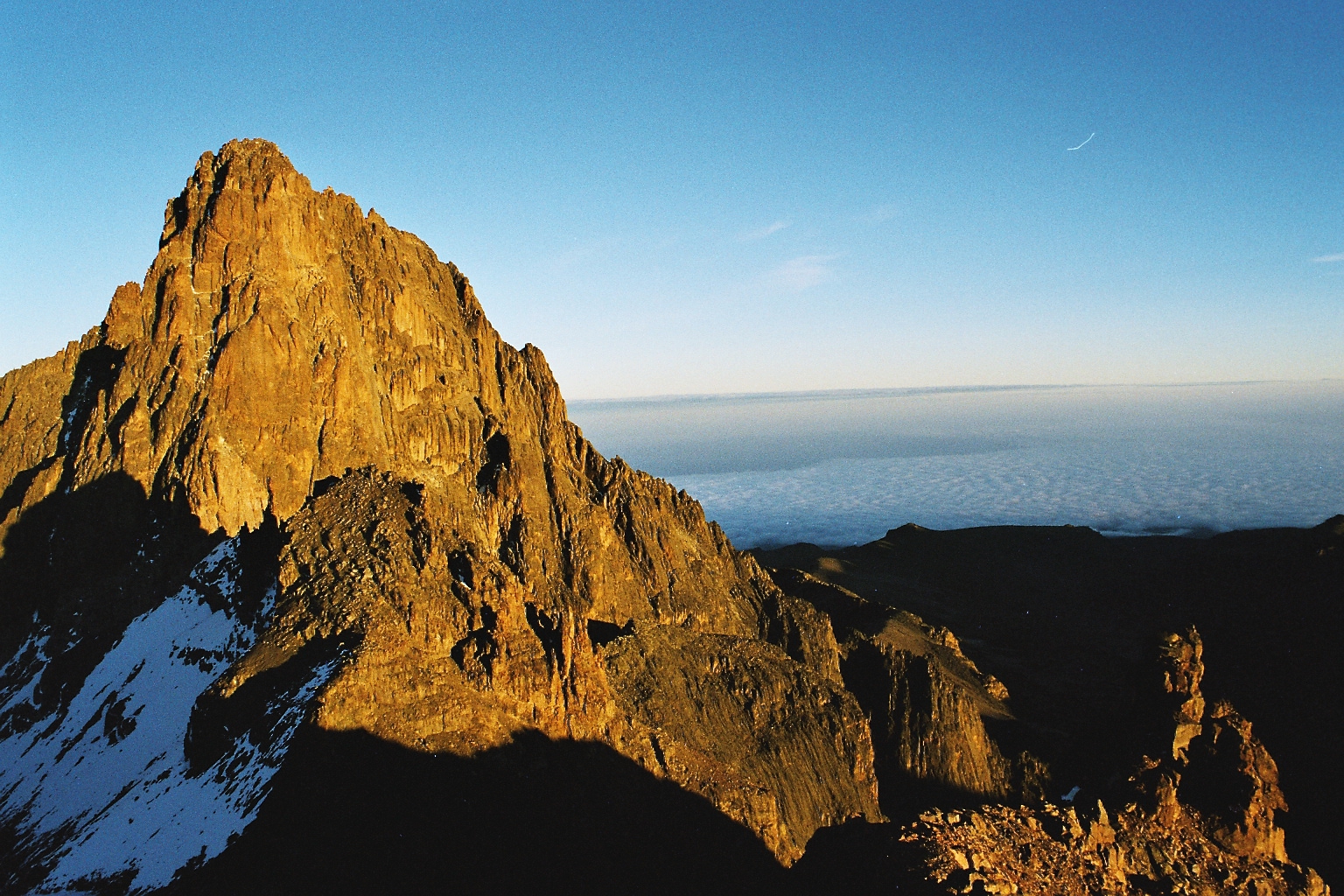
The country takes its name from Mount Kenya, located in the central highlands.
Location and Geography : Kenya is located in East Africa
and borders Somalia to the northeast, Ethiopia to the north, Sudan to the
northwest, Uganda to the west, Tanzania
to the south, and the Indian Ocean
to the east. The country straddles the equator, covering a total of 224,961
square miles (582,600 square kilometers; roughly twice the size of the state of
Nevada). Kenya has wide white-sand
beaches on the coast. Inland plains cover three-quarters of the country, they
are mostly bush, covered in underbrush.
In the west are the highlands where the
altitude rises from three thousand to ten thousand feet. Nairobi, Kenya's
largest city and capital, is located in the central highlands. The highest
point, at 17,058 feet (5,200 meters), is MountKenya. Kenya shares Lake Victoria, the largest lake in Africa and the main source of the Nile River, with Tanzania and Uganda. Another significant feature of
Kenyan geography is the Great Rift Valley, the wide, steep canyon that cuts
through the highlands. Kenya is also home to some of the world's most
spectacular wildlife, including
elephants, lions, giraffes, zebras, antelope, wildebeests, and many rare and
beautiful species of birds. Unfortunately, the animal population is threatened
by both hunting and an expanding human population; wildlife numbers fell
drastically through the twentieth century. The government has introduced strict
legislation regulating hunting, and has established a system of national parks
to protect the wildlife.

Demography : According to an estimate in
July 2000, Kenya's population is 30,339,770. The population has been
significantly reduced by the AIDS epidemic, as have the age and sex
distributions of the population. Despite this scourge, however, the birth rate
is still significantly higher than the death rate and the population continues
to grow.
There are
more than forty ethnic groups in the country. The largest of these is the
Kikuyu, representing 22 percent of the population. Fourteen percent is Luhya,
13 percent is Luo, 12 percent is Kalenjin, 11 percent Kamba, 6 percent Kisii,
and 6 percent Meru. Others, including the Somalis and the Turkana in the north
and the Kalenjin in the Great Rift Valley, comprise approximately 15 percent of
the population. These ethnic categories are further broken down into subgroups.
One percent of the population is non-African, mostly of Indian and European
descent.
 Linguistic Affiliation : The official languages are
English and Kiswahili (or Swahili).
Swahili, which comes from the Arabic word meaning "coast," is a mix
of Arabic and the African language Bantu. It first developed in the tenth
century with the arrival of Arab traders; it was a lingua franca that allowed
different tribes to communicate with each other and with the Arabs. The major
language groups native to the region include Bantu in the west and along the
coast, Nilotic near Lake Victoria, and Cushitic in the north.English is
the language generally used in government and business. It is also used in most
of the schools, although there has been movement towards using Kiswahili as the
teaching language. English is not spoken solely by the elite, but only people
with a certain level of education speak it.
Linguistic Affiliation : The official languages are
English and Kiswahili (or Swahili).
Swahili, which comes from the Arabic word meaning "coast," is a mix
of Arabic and the African language Bantu. It first developed in the tenth
century with the arrival of Arab traders; it was a lingua franca that allowed
different tribes to communicate with each other and with the Arabs. The major
language groups native to the region include Bantu in the west and along the
coast, Nilotic near Lake Victoria, and Cushitic in the north.English is
the language generally used in government and business. It is also used in most
of the schools, although there has been movement towards using Kiswahili as the
teaching language. English is not spoken solely by the elite, but only people
with a certain level of education speak it.Symbolism : The Kenyan flag has three horizontal stripes—red, black, and green—separated by thin white bands. The black symbolizes the people of Kenya, the red stands for the blood shed in the fight for independence, and the green symbolizes agriculture. In the center of the flag is a red shield with black and white markings and two crossed spears, which stands for vigilance in the defense of freedom.




